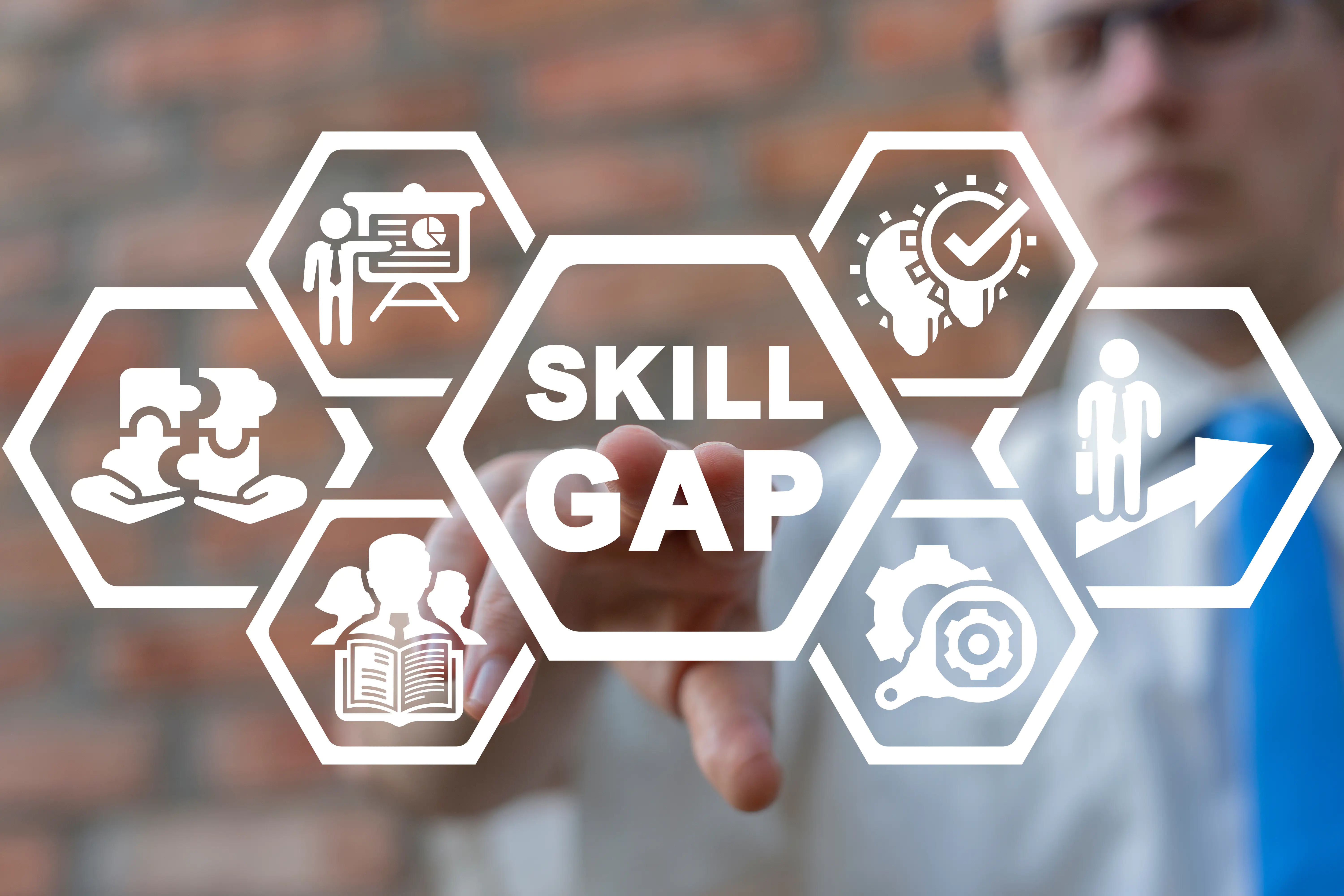
People Analytics harnesses the power of data to understand, predict, and enhance various aspects of the employee lifecycle. It is a dynamic tool that helps improve workforce planning and employee experience and drive organizational excellence.
As organizations practice agility in the ever-evolving workforce dynamics, People Analytics stands as the linchpin, propelling data-driven HR for strategic decision-making. According to HR.com, 57% of organizations agree or strongly agree that People Analytics leads to better business outcomes.
This comprehensive guide will help you explore People Analytics, its different aspects, and their impact on HR operations. You will also learn about the best practices to successfully build an impactful People Analytics strategy.
What is People Analytics?
People Analytics systematically uses data and insights to make informed decisions about an organization’s workforce. It is a goal-oriented and data-driven method of analyzing people, processes, functions, challenges, and opportunities within a workplace to attain sustainable business growth.
People Analytics involves applying statistics, modeling, and mathematics to data related to candidates and employees. It enables identifying and predicting patterns in employee acquisition and management.
Here are a few People Analytics metrics that organizations need to track for HR success.
- Employee turnover
- Employee absenteeism rate
- Time to hire
- Cost per hire
- Revenue per employee
- Diversity, equity, inclusion, and belonging (DEIB)
- Employee experience and engagement
- Employee performance
- Promotion rate
To be precise, if HR is the business navigator steering through workforce complexities, People Analytics is the GPS providing real-time data for strategic decision-making.
Why is People Analytics Important for HR?
As Per McKinsey, Organizations That Embrace People Analytics Can Increase Recruitment Efficiency By 80%, Decrease Attrition Rates By 50%, And Improve Business Productivity By 25%.
That’s not all. There are various other benefits that People Analytics brings to the table. Let’s take a look at them one by one.
1. Improve Talent Acquisition
People Analytics in HR streamlines the recruitment process by providing insights into the effectiveness of sourcing channels, candidate selection criteria, and time-to-fill positions. This optimization ensures a more efficient and targeted approach to hiring and enhancing the quality of new hires.
For instance, People Analytics can reveal that candidates sourced from professional networking platforms, such as LinkedIn, not only have higher initial performance metrics but also show greater long-term retention. HR can strategically invest more resources in targeted outreach on these platforms to attract top talent.
2. Reduce Employee Turnover
One of the most important benefits of People Analytics is that it helps HR professionals reduce employee turnover. By analyzing historical data on turnover and identifying contributing factors, People Analytics helps HR professionals implement targeted retention strategies.
Understanding the drivers behind employee exits allows for proactive measures to enhance job satisfaction, address concerns, and reduce turnover rates.
3. Enhance Employee Experience and Engagement
According to HR.com, 42% of organizations consider employee experience and engagement as one of the top functional areas where People Analytics is crucial.
People Analytics measures employee engagement and satisfaction through data-driven insights. Understanding employee sentiments helps HR create initiatives that enhance employee experience, leading to higher engagement, increased productivity, and a positive workplace culture.
Consider a scenario where a recent software change negatively impacted employee satisfaction. People Analytics may highlight a drop in engagement due to this change. Later, HR can implement targeted interventions like communication strategies and training programs to address specific concerns and improve employee experience.
4. Identify and Close Skills Gap

With People Analytics, HR teams can analyze employee skills and competencies to identify the skills gap within the workforce. They can implement targeted training and development programs to upskill employees and create a continuous performance management system.
Not a while ago, Harbinger helped a San Diego-based coach-based performance management software provider build a continuous performance management system. The solution helped our client automate performance tracking, identify the skills gap, personalize learning journeys, and foster workplace growth. Discover how we did it.
Additionally, AI-based People Analytics platforms are taking center stage. These platforms can help HR professionals automate skills gap analysis, pinpoint upskilling and reskilling areas, provide personalized learning recommendations, and close the skills gap.
5. Cut Overhead Costs
People Analytics allows HR to assess the efficiency of various HR processes and initiatives. It can help them identify areas of inefficiency to optimize workflows, reduce unnecessary costs, and enhance the overall cost-effectiveness of HR operations.
For example, People Analytics can analyze workspace utilization data and employee productivity metrics, indicating that a significant percentage of the workforce can work from home. HR can use this information to implement flexible work policies, potentially reducing the need for large office spaces and cutting overhead costs associated with maintaining physical workplaces.
6. Build Future-Ready HR Strategy
People Analytics provides a forward-looking perspective, allowing HR to anticipate future workforce trends and challenges. This foresight enables the development of a future-ready HR strategy that aligns with the evolving needs of the organization.
7. Make Data-Driven Decisions
Leveraging data-driven insights, HR professionals can make informed and objective decisions across various aspects of human resource management. They can ensure HR strategies and initiatives are aligned with evidence-based reasoning.
8. Meet DEIB Objectives
By analyzing workforce demographics, People Analytics helps organizations track progress toward DEIB goals. It identifies areas needing attention, guides targeted initiatives and ensures a more inclusive and equitable workplace.
How Does People Analytics Work?

People Analytics extracts data from your organization’s digital HR systems and employs algorithms, calculations, and machine learning to generate charts and graphs. Later, this information can be used by HR professionals to make data-driven talent decisions.
Recent advancements in AI take the transformative capabilities of People Analytics to a whole new level. AI technologies like generative AI and natural language processing can unravel intricate patterns in workforce data, enabling organizations to not only predict future talent trends but also generate innovative solutions for complex HR challenges. Some examples include AI-powered recommendation engines, sentiment analysis tools, and automated skills gap analysis frameworks.
Concretely, People Analytics employs advanced analytical techniques on diverse datasets related to employees. The three essential elements of the People Analytics process are as follows.
1. Data
It is a comprehensive set of information about employees and their organizational interactions. This data can include demographics, performance metrics, engagement surveys, and training records. The People Analytics software extracts this data from different HR systems like payroll and human capital management.
2. Analytics
It involves applying various analytical techniques, statistical methods, and tools to process and interpret the collected data. Machine learning algorithms and predictive modeling are often employed to identify patterns, trends, and correlations within the data. This step transforms raw data into valuable insights.
3. Insights
It involves interpreting the results of the analytics phase to draw meaningful conclusions that guide decision-making. The findings need to be relevant, timely, and applicable to the organization’s goals.
Recently, Harbinger conducted a Power Hour on “Using People Analytics for Sustainable Remote Workforce.” In this virtual session, Shrikant Pattathil, President and CTO, Harbinger Group, shed light on the importance of People Analytics, market shifts in the future of work, and how to leverage technology to deliver better analytics.
4 Types of People Analytics
Typically, there are four types of People Analytics. They can either be implemented in isolation or used as a combination to achieve business results. Each of them provides a different set of analytics and insights. Let’s understand them in brief.
1. Descriptive Analytics
Descriptive analytics summarizes historical workforce data to unveil trends, patterns, and critical metrics. It provides a snapshot of past events, offering foundational insights into the workforce.
2. Diagnostic Analytics
Diagnostic analytics delves into the data to uncover the root causes behind specific workforce issues or trends identified through descriptive analytics. It aims to provide context and understanding of why certain events occurred.
3. Predictive Analytics
Predictive analytics utilizes historical data and statistical algorithms to forecast future outcomes within the workforce. It helps anticipate trends, potential challenges, or opportunities, enabling proactive decision-making.
4. Prescriptive Analytics
Prescriptive analytics goes beyond predicting outcomes to recommend specific actions organizations can take to influence those outcomes. It guides HR professionals on the most effective courses of action to achieve desired workforce outcomes.
How to Build an Effective People Analytics Strategy
Building an effective People Analytics strategy involves systematically utilizing data and analytics for making informed HR and business decisions. Here are a few best practices to be taken into consideration.
1. Define Desired Business Objectives
To define desired business objectives, start by engaging with senior leadership and key stakeholders to comprehensively understand the organization’s overarching goals. Identify areas where HR can contribute, such as talent acquisition, employee retention, and productivity.
Align these broader business goals with HR-specific objectives, ensuring they are measurable, time-bound, and directly impact strategic outcomes. For example, if the organization aims to increase market share, HR objectives may include attracting top talent with specific skills relevant to the industry.
2. Select People Analytics Tools that Align with Business Objectives
Evaluate the current state of HR systems and tools within the organization. Identify any gaps or inefficiencies that hinder the achievement of HR objectives.
Consider tools that offer features such as real-time reporting, interactive dashboards, and predictive analytics capabilities to support data-driven decision-making. Here are a few People Analytics tools that HR professionals can rely on.
- Darwinbox
- Workday
- Teramind
- One Model
- Crunchr
- Tableau
- Visier
3. Leverage AI Technologies
To harness the power of AI technologies in People Analytics, organizations can delve into advanced techniques such as generative AI, natural language processing, and machine learning. By leveraging generative AI models, HR professionals can simulate various workforce scenarios, assess potential outcomes, and make informed decisions while maintaining data security and compliance.
With natural language processing, HR teams can employ sentiment analysis to gain deeper insights into employee experiences. Moreover, by implementing machine learning algorithms alongside natural language processing, organizations can automate the analysis of vast amounts of unstructured data to extract valuable information from employee surveys and performance reviews.
4. Choose a Trusted HR Technology Partner

Selecting a trusted HR technology partner is pivotal for creating a future-ready People Analytics strategy. Look for a partner that offers scalable People Analytics solutions that can adapt to the evolving needs of the organization. Additionally, evaluate their commitment to compliance with data protection laws such as GDPR, CCPA, and HIPAA.
Harbinger has been helping global organizations achieve their People Analytics goals by providing transformative People Analytics solutions. Our strong domain knowledge and technology capabilities include:
- Comprehensive but simplified reporting and visualization
- Evidence-based decision-making on identified trends
- Predictive and sentiment analytics using machine learning algorithms
Recently, Harbinger helped a US-based talent acquisition company collect and analytically process end customer human resources information system data for recruitment. Our solution automated data transfer, provided faster and accurate analytics, and deployed machine learning modules for future predictions. To know more about our solution and its impact, download the success story.
5. Develop People Analytics Skills and Leadership
Last but not the least, invest in training programs to develop the necessary People Analytics skills within the HR team. Provide training on data analysis, interpretation, and the use of analytics tools. Prioritize continuous learning to keep HR professionals updated on the latest trends and technologies in People Analytics.
People Analytics Trends to Follow in 2024
No one can tell what the future of People Analytics will look like in 2024 and beyond. The only step we can take to stay competitive is tracking essential People Analytics trends and adapting the HR strategy accordingly. Here are a few People Analytics trends that HR professionals need to keep an eye on in 2024.
- AI in HR
- HR data integration
- Employee experience analytics
- DEIB analytics
- Real-time analytics and decision support
- Agile HR practices
- Remote and flexible work patterns
To Sum Up
People Analytics is one of the most essential HR technologies that will determine the future of work. Effective implementation of this technology will help HR professionals make evidence-based decisions for organizational success.
However, to make the most of People Analytics, it is not only important to analyze attributes of employees and employee-employee relationships but also consider employee interactions. It will enable HR teams to identify patterns, understand communication dynamics, and foster a collaborative work environment.
If you want to harness the true potential of People Analytics for HR success, write to us at contact@harbingergroup.com. Our HR technology experts would be more than happy to help you achieve your desired business goals.






